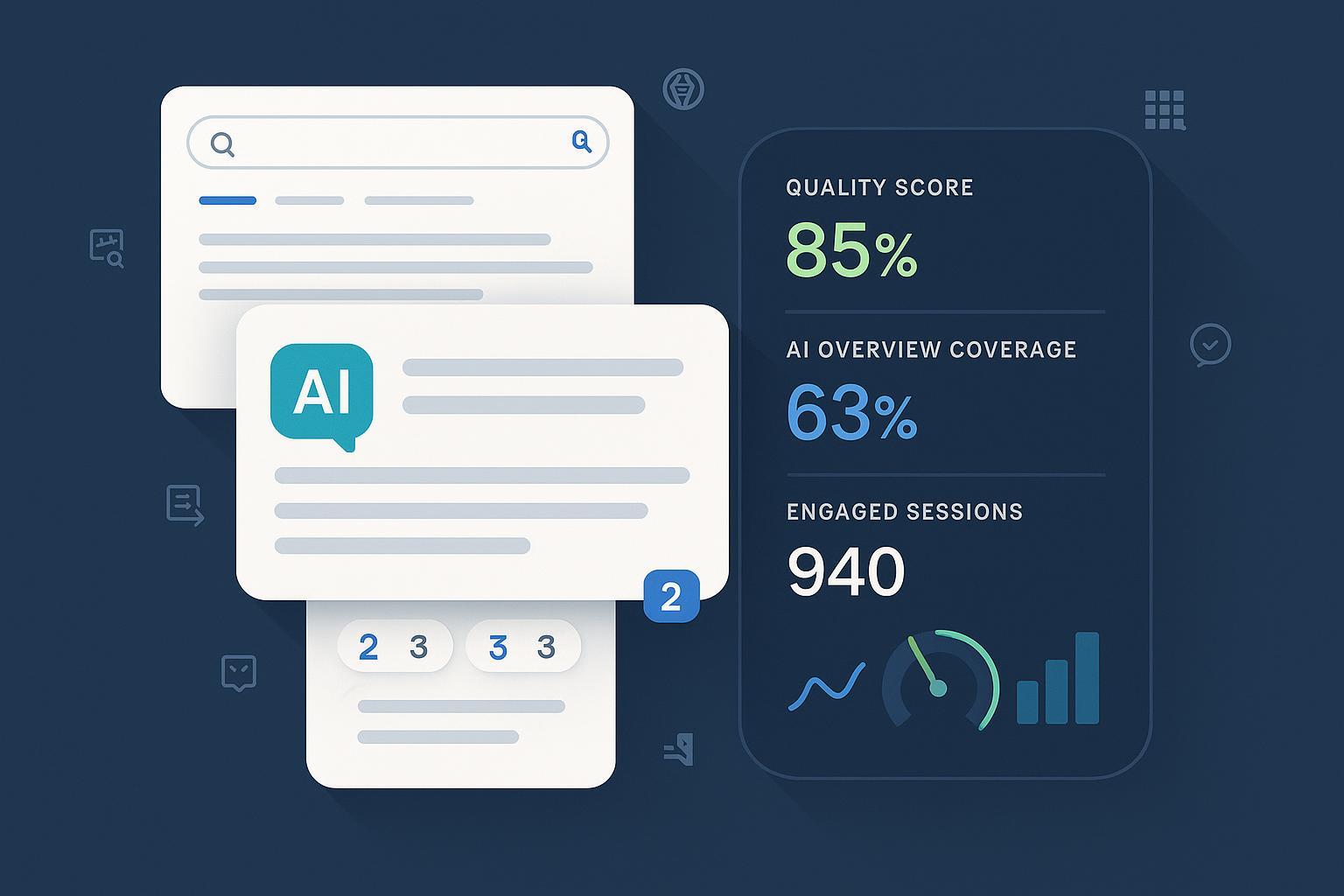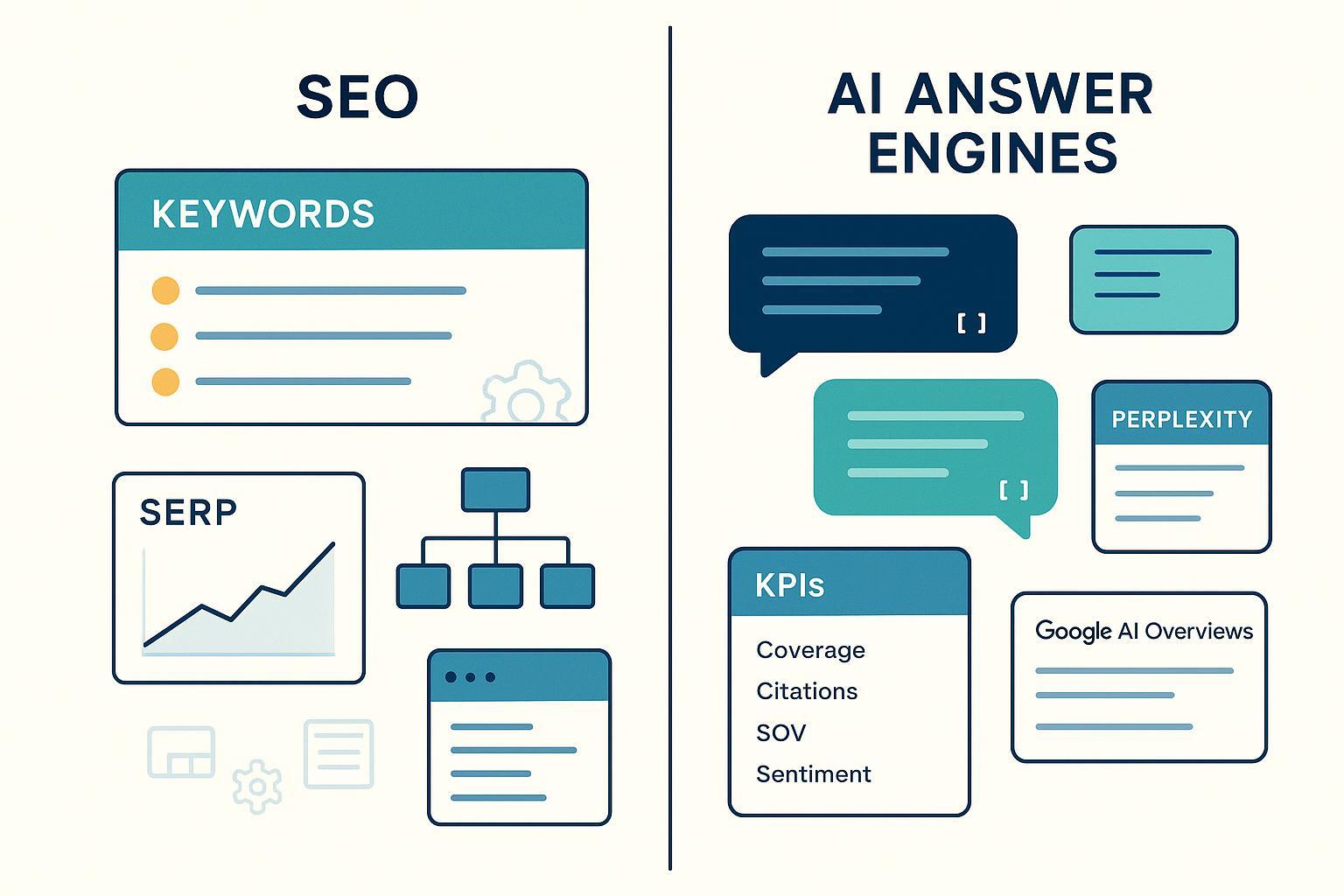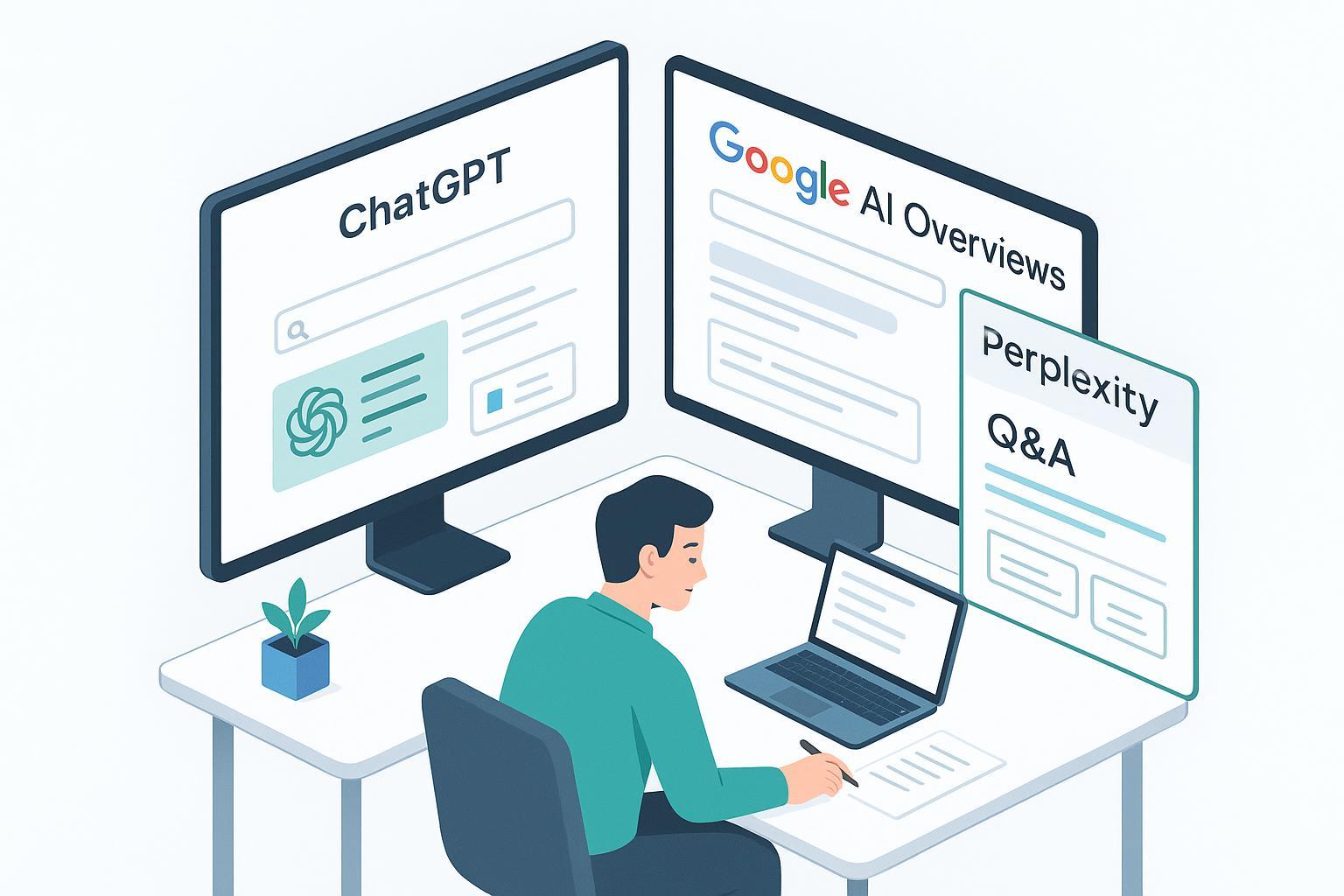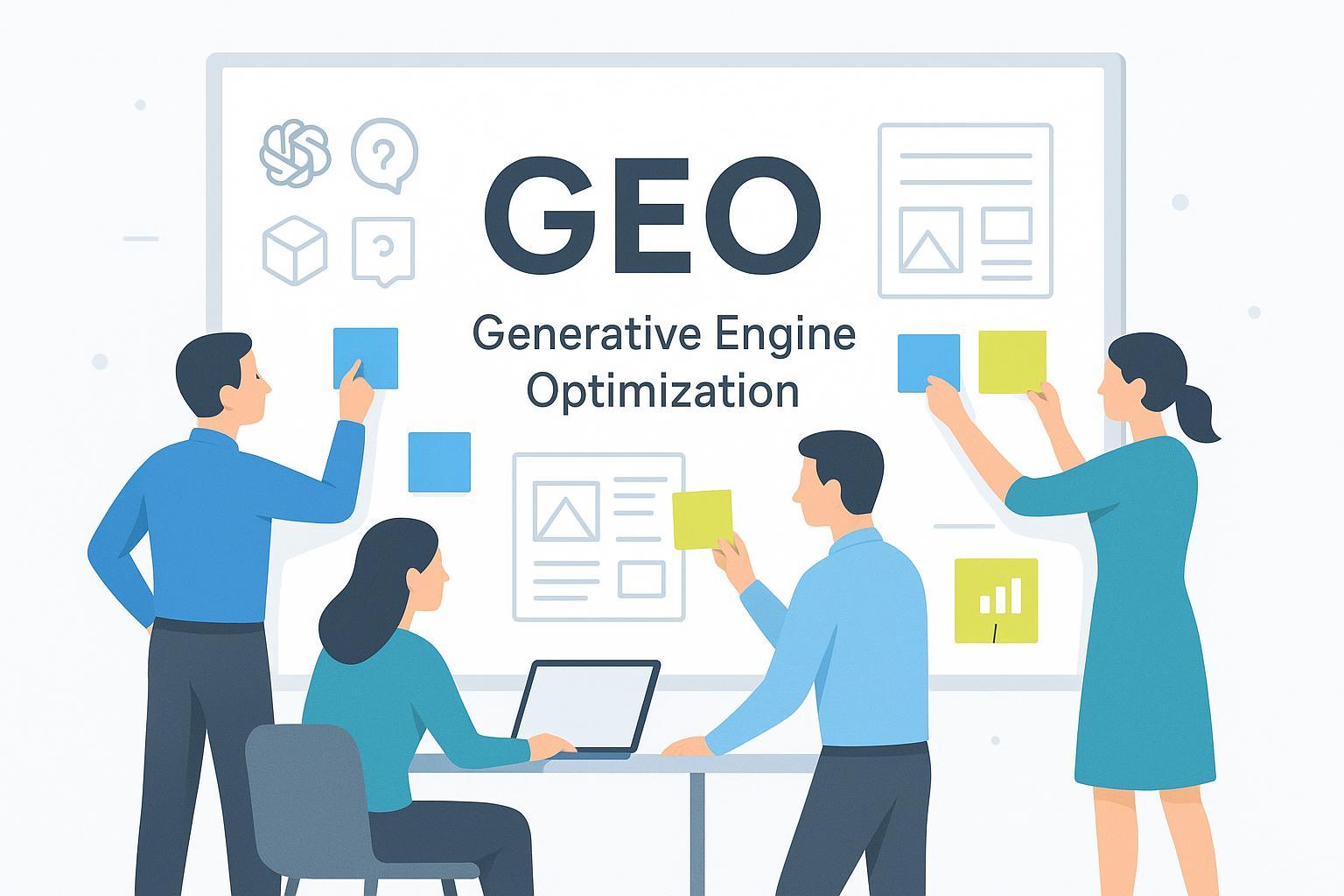Adapting SEO for Google’s Granular Quality Scoring (2025)
Discover 2025 best practices for professional SEO: adapt strategies to Google’s granular quality scoring, autopilot algorithms, and AI search visibility.


Google’s shift to AI-driven, granular quality scoring—combined with autopilot-style enforcement—has moved SEO from keyword-centric tactics to an outcomes-first discipline. If you manage organic visibility today, your job is to engineer content and technical systems that satisfy user intent quickly, earn authoritative citations, and remain compliant under continuously updated policies. Below is a field-tested playbook that I’ve used with brands across multiple verticals to stabilize and grow visibility in 2025’s AI search environment.
What Granular Quality Scoring and Autopilot Algorithms Mean in Practice
Here’s the operational reality, grounded in recent updates and published guidance:
- Google has embedded “helpful content” evaluations into core ranking and tightened spam enforcement. The March 2024 core update explicitly targeted scaled, unoriginal content and other abuses, with Google stating a goal to show “less” low-quality content in results according to the Google Search update announcement (2024). Google’s overview of core updates clarifies the broad impact and recovery patterns in Search Central’s core updates documentation.
- AI search experiences (AI Overviews and AI Mode) increasingly answer queries directly. Google’s site-owner guidance in Succeeding in AI search (2025) emphasizes technical accessibility, schema, freshness, and authoritative sourcing.
- Click behavior is changing. Multiple independent studies report CTR declines where AI Overviews appear—for example, the cohort analysis from Ahrefs on AI Overviews reducing clicks (2025) and publisher datasets summarized by Digital Content Next on lower CTRs (2025).
- Leak-derived concepts such as Navboost and “good click/bad click” models are informative but not officially confirmed ranking systems. Treat them as directional evidence, as discussed in the SparkToro analysis of leaked documents (2024) and Search Engine Land’s synthesis of the leak (2024).
Bottom line: success now depends on how consistently you deliver intent-satisfying answers, demonstrate originality and expertise, and keep technical compliance tight—while measuring visibility across both traditional SERPs and AI answer engines.
The Core Workflow: From Topics to Answer-Ready Content
This is the workflow I deploy when adapting sites to granular scoring:
-
Map intents to topic clusters
- Build 8–12 high-value clusters aligned to business outcomes. Each cluster should cover the main query (pillar) and 6–10 subtopics (spokes) that collectively answer real user journeys.
- Validate each subtopic’s searcher intent (informational, transactional, comparative). Surface questions and edge cases users bring up in communities.
- Capture entities (brands, products, places, experts) consistently so AI systems can resolve references.
-
Design pages for answer engines first
- Introduce a concise, authoritative answer within the first 150–200 words. Follow with expanded context, alternatives, and caveats.
- Use clear headings (H2/H3) that map to common sub-questions; include “what,” “how,” “why,” and “alternatives” sections.
- Cite primary sources selectively. When you use statistics or definitions, link the canonical artifact and include the year and publisher in-text.
-
Implement schema and author signals
- Article/BlogPosting, FAQPage, HowTo, Organization, and Person schema are common wins. Ensure author credentials are visible and consistent.
- Confirm indexability: 200 status codes, non-blocked by robots, proper canonicalization. Align with Google’s AI features guidance in Search Central’s AI features documentation (2025).
-
Prove originality and experience
- Add firsthand process notes, failure/iteration stories, and annotated screenshots (where licensing permits). Explicit dates and update logs help AI systems evaluate freshness.
- Distinguish your content with unique datasets, comparison tables, and practical checklists.
Structured Data and Formatting That Raise Answer Likelihood
In 2025, the formatting and metadata around your content meaningfully affect whether it’s selected in AI Overviews or cited by other answer engines. Focus on:
- Schema coverage: Implement FAQPage and HowTo markup where you truly answer procedural questions. For editorial pieces, Article with accessible author data and Organization helps establish entity clarity. Align with Google’s site-owner guidance for AI search (2025).
- Source hygiene: Link to canonical research or official docs, not summaries; place the citation near the claim with publisher and year.
- Depth pages: Industry analyses suggest deep internal pages are far more likely to be cited than homepages. See the discussion on internal page citations in BluShark Digital’s analysis (2024).
- Update cadence: Add revisited-on timestamps and change logs. Record what was updated (e.g., schema added; performance improved; examples refreshed) and why.
Technical Compliance and Site Hygiene
Autopilot-style enforcement means you must be technically clean at all times. A pragmatic, recurring checklist:
-
Crawlability and indexation
- Verify Googlebot access, 200 responses, and noindex directives. Audit canonicals and hreflang where applicable.
- Monitor coverage and fix soft 404s, duplicate clusters, and infinite faceted paths.
-
Performance and UX
- Keep LCP under ~2.5s on mobile; stabilize CLS; ensure responsive layouts. Compress images and ship modern formats (AVIF/WebP) where supported.
- Remove intrusive interstitials and heavy client-side frameworks where they block content rendering.
-
Content integrity and spam policy alignment
- Avoid scaled AI content without editorial oversight. Google’s Spam Policies for Web Search (2025) explicitly call out scaled content abuse, expired domain abuse, and site reputation abuse.
- Maintain unique value on pages: consolidate thin variants, merge overlapping posts, and redirect to canonical pillars.
-
- Ensure structured data accuracy, accessible JS-rendered content, and standard HTML elements for primary content.
- Review Google’s AI search features regularly in Search Central’s AI features guidance (2025).
Measurement and KPIs Across AI Engines
A 2025 SEO program requires instrumenting for both SERP listings and presence inside AI answers. A working measurement framework:
-
Share of AI answers
- Track how often your brand or URLs appear in Google AI Overviews/AI Mode, Bing Copilot, Perplexity, and ChatGPT. Log the number of citations, their order, and whether links are present.
- Use a standard query list and measure weekly deltas, especially during/after updates summarized by outlets like Search Engine Land on CTR impacts (2025).
-
Engagement quality
- In GA4, emphasize engaged sessions, engagement rate, average engagement time, scroll depth, and repeat visits. These are better indicators than raw sessions in zero-click environments.
- Map intent categories to KPI baselines. Informational clusters may drive fewer conversions but higher assisted conversions.
-
Assisted conversions and attribution
- Apply multi-touch models and annotate campaigns when AI answer visibility increases. Tag links where possible to attribute downstream conversions.
-
Community signals and unlinked mentions
- Monitor Reddit, forums, and review sites for brand mentions and sentiment shifts that correlate with AI answer citations. For a practical workflow on driving citations via communities, see this guide on Reddit-driven AI search citations.
-
Cadence and thresholds
- Review visibility weekly, audit clusters monthly, perform technical sweeps quarterly. Establish thresholds for action (e.g., AI citation loss >25% in a cluster triggers refresh).
Practical Example: Cross-AI Visibility Monitoring (with Disclosure)
When rolling out topic clusters for a travel marketplace, our team needed one place to track citations across Google AI Overviews, Bing Copilot, Perplexity, and ChatGPT. We used Geneo to log query-level visibility and sentiment across engines, then aligned refreshes to clusters where citations or attribution links dropped. Disclosure: We have a working relationship with Geneo and may use it in client workflows; recommendations here are neutral and based on observed utility.
- We maintained a 60-keyword list per cluster, checked weekly deltas, and flagged pages losing AI citations for content updates (schema, fresher examples, clarified steps).
- To illustrate what a query-level visibility snapshot looks like, review an example of AI visibility query reports for vacation rentals.
International and Multilingual Considerations
Granular scoring will penalize inconsistent international implementations. Prioritize:
-
Hreflang correctness
- Include reciprocal pairs and x-default; use ISO language and region codes accurately. Validate via periodic crawls and Search Console.
- For common pitfalls and fixes, see technical guidance like the Search Engine Land hreflang overview (ongoing).
-
- Local experts should review content, examples, and product names; avoid literal translations without context.
- Align structured data (LocalBusiness, Product, Event) to regional formats and regulations.
-
Entity consistency
- Keep brand/legal names and addresses consistent across languages; centralize changes and propagate.
-
Privacy and analytics
- Respect regional consent requirements (GDPR/CCPA equivalents) and align data retention with local law.
Pitfalls, Trade-offs, and How to Avoid Costly Mistakes
-
Over-automation of content
- Autogenerating hundreds of pages without editorial review triggers quality and spam risk. Balance scale with human oversight.
-
Thin “FAQ stuffing”
- Adding superficial FAQs without depth or authoritative references won’t move the needle. Build supporting content that actually answers.
-
Ignoring AI answer formats
- If you don’t front-load concise answers and maintain clean schema, your content is less likely to be cited.
-
Over-indexing on one study
- AIO coverage and CTR impacts vary by query and vertical. Treat figures as ranges; triangulate evidence from sources like Ahrefs’ cohort study (2025) and publisher data summarized by Digital Content Next.
-
Neglecting site reputation and parasite content risks
- Hosting third-party content for quick ranking can lead to penalties. Review Google’s enforcement updates and the background on site reputation abuse captured in Google’s policy update notes (2024–2025).
Execution Checklists You Can Implement Today
Use these condensed checklists to operationalize the above.
- Identify 8–12 clusters tied to business outcomes
- Build pillars with 6–10 spokes each
- Front-load concise answers within 150–200 words
- Map sub-questions into H2/H3 sections
- Insert canonical sources with publisher+year
- Add update logs and timestamps
- Article/BlogPosting with Person + Organization
- FAQPage/HowTo where applicable
- Check indexability, 200 status, robots directives
- Verify canonicals and internal linking paths
- Refresh author bios and credentials
- Technical Hygiene
- Audit coverage and fix soft 404s
- Optimize LCP, CLS, TBT; compress images
- Reduce blocking scripts; improve server response
- Validate hreflang pairs and x-default
- Confirm sitemaps and crawl budgets align with scale
- AI Answer Visibility & Measurement
- Maintain a standardized query set per cluster
- Log AI citations weekly across engines
- Track GA4 engagement and assisted conversions
- Monitor community sentiment and unlinked mentions
- Set thresholds: e.g., -25% AI citations triggers refresh
- Review visibility after core/spam updates, such as those documented in Search Engine Land’s update coverage (2025)
- Compliance and Risk Controls
- Avoid scaled low-quality content
- Do not repurpose expired domains for ranking
- Reject hosting low-value third-party content
- Align with current guidance in Google’s spam policies (2025)
Advanced Techniques and Iteration Loops
-
Answer pattern optimization
- Analyze which headings and answer lengths correlate with citations. Experiment with concise summaries vs. bulleted answers and measure downstream impact.
-
Evidence enrichment
- Incorporate primary studies, official docs, and expert quotes. When discussing sensitive or evolving topics, add caveat language and link to original artifacts.
-
Entity graph strengthening
- Use consistent naming, cross-link related entities, and add structured data that clarifies relationships (Organization → Product → Author → Location). This helps AI systems resolve references reliably.
-
Community acceleration
- Encourage subject-matter experts to participate in credible communities. Thoughtful contributions often lead to mentions and references that AI engines pick up. For tooling context on monitoring options, see this comparison of AI brand monitoring platforms.
Case Notes on Enforcement and Recovery
- If you received a manual action related to site reputation abuse or scaled content, remove or quarantine the offending sections, publish a remediation log, and request reconsideration if applicable.
- For algorithmic demotions following core/spam updates, re-balance clusters for depth and originality, cut duplicate or thin content, and refresh with primary-source citations. Google’s announcements—like the March 2024 quality improvements—indicate broad changes; recovery typically follows sustained improvements rather than quick fixes.
Closing: Operational Next Steps
- Run a 90-day sprint: build or refactor 3–4 clusters with answer-first formatting, schema, and canonical sourcing; instrument AI visibility logging; set monthly technical audits.
- Align KPIs to the new reality: track share of AI answers, engaged sessions, assisted conversions, and citation quality, not just rankings.
- Consider adopting a cross-AI monitoring workflow to spot citation gains/losses early and prioritize refreshes. If you’re already using platforms like Geneo in your stack, ensure neutral, evidence-based use and keep disclosure practices clear.
Staying competitive in 2025’s AI-led search environment requires disciplined content engineering, impeccable technical hygiene, and continuous visibility measurement. Treat leaks as directional intelligence, but anchor decisions in official guidance and your own observed data.





